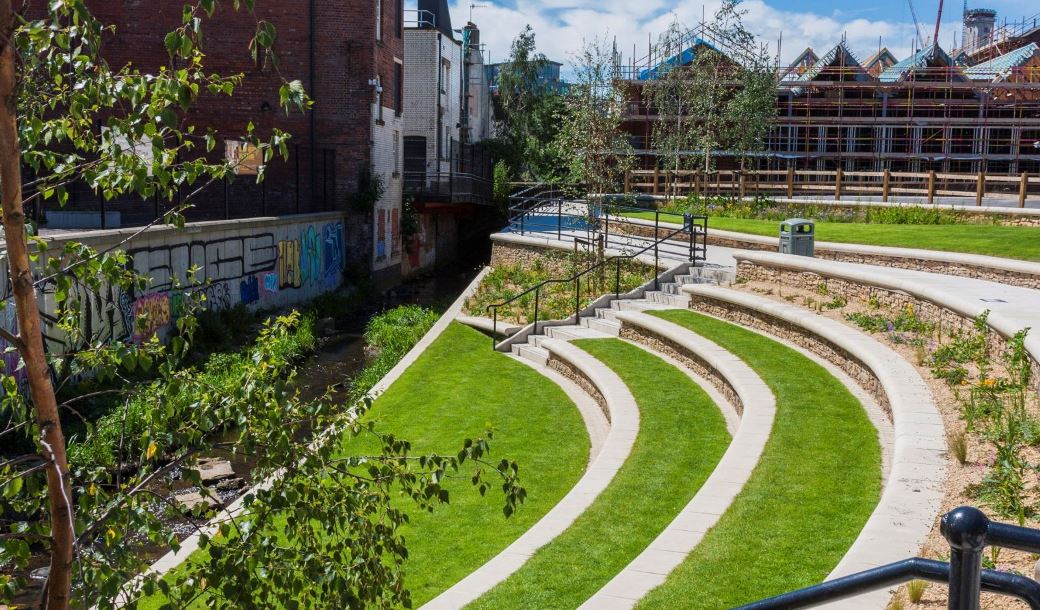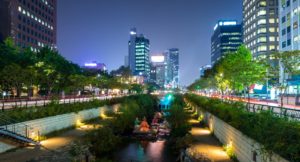Sheffield, England lies at the intersection of two rivers, but its watery roots are largely invisible. The Porter, Sheaf and Don rivers spend most of their urban life underground.
Why? Because for several centuries, they were little more than foul-smelling sewers, full of human excrement and industrial waste. Burying them was like sweeping dirt under the carpet: an expedient but unwise “solution”.
“You’d be hard-pressed to find the Sheaf anywhere in the centre,” says Simon Ogden, head of city regeneration at Sheffield city council.
But the city’s recent success in uncovering Porter Brook is the first step in a new project to bring back Sheffield’s lost urban rivers – to remove the culverts and integrate them into the city again. Given the well-proven revitalizing powers of urban waters, this is a wise approach indeed.
Known as “daylighting”, Sheffield’s work reflects a global movement towards rediscovering urban rivers in cities. Most people, for instance, think the Thames is London’t only river when, in fact, it has thirteen rivers and major streams.
The poster child of all daylighting projects is Seoul’s Cheonggyecheon stream, completed in 2005. (It has often been a part of REVITALIZATION publisher Storm Cunningham‘s talks and workshops since 2003.)
Auckland, New Zealand removed over 180 meters of underground piping and 5,000 cubic meters of natural clay to daylight the Fairburn and Parahiku reserve streams in 2014.
More recently in the US, $19 million was invested to daylight the Saw Mill River in downtown Yonkers, New York. The aim was to economically revitalize the area, and to bring back habitat for a range of species such as muskrats and snapping turtles.
So river daylighting isn’t purely for aesthetic reasons. Climate change has also been one of the major driving factors for large-scale investment in these projects. Planners hope to utilise the passive cooling provided by rivers to help combat the urban heat island effect, and most of all, offer benefits in terms of flood protection.
Daylighting can also enhance risks to public saftey deriving from decrepit infrastructure, which often leads to sinkholes that have been proliferating worldwide, including in younger nations like the US.
In the UK, daylighting is a practical and cost-effective alternative to renovating Britain’s ubiquitous Victorian-era culverts that are difficult to maintain. Last year, in central Sheffield, a culvert over the River Porter collapsed, causing part of a car park to completely cave in.
Featured photo of Porter Brook pocket park in Sheffield via the Landscape Institute.


